Introduction
I will begin sharing one of the first applications Einstein discovered for General Relativity! Even before formalizing his ideas he was successful at using General Relativite's concepts to approximate the mass of a massive body!
Our approach to rediscover this method takes advantage of Einstein's original notion that light waves becoming noticeably bent by the presence of a large gravitational field. With this knowledge we can use classical mechanics to find a relation between the body's mass and the angle describing the bend in the photons path. Afterwards we will rewrite this angle to make them more useful to the observer. Today, I will be tackling the fist half of this proof and will leave the remainder for a later discussion.
Before we begin, I will be presenting a diagram to help us visualize this scenario.
The yellow circle represents the body which we wish to learn the mass of. As you can see, the light emitted from the source behind the body is bent as it travels past the body and causes the observer to record a different apparent position. If we were to choose a source with a known position
Finding α!
First, we will use kinematics to create an expression for the angle, α the photon “bends” from its initial trajectory.
The classical solution for the distance the photons is offset by is to compare the scenario for two observers. More specifically by comparing the observations for a observer at rest relative to the light source and the other accelerating at the rate of gravitational acceleration.
This will lead us to infer that the distance y can be found using the kinematics relation between acceleration and time. Namely:
where t is the time required for the photon to reach the observer.
With further analysis, t can replaced thanks to the relation for distance with a constant velocity.
By plugging this into our original expression, we obtain:
For the next step, we will be forced to assume that the angle we are looking for is incredibly small. Unfortunately, this limits the application of this method to less massive objects but is a requirement for us to use this simple of a calculation!
At smaller angles, we are allowed to approximate an angle as being the tangent of itself. I personally always becomes slightly upset when making any approximations but as you can see, at near zero values the y = tan(x) graph is essentially linear.
Below is a visual encase you are still uneasy about this approximation:
The red curve is graphing tan(x) while the blue line is of y=x. As we zoom closer you will notice that tan(x) essentially maps onto a linear equaiton.
Now that we have come to terms with the approximation, we will apply it to the above equation.
Finally, this expression can be generalized with the law of universal gravitation.
Conclusion
This resulting expression is only four times smaller than what Einstein would later predict using General Relativity! Thanks to the modest size of α (and the limitations of the available technology) this method successfully predicted the angle of deviation between light emitted from our sun. This became the first experimental evidence for what would later become known as General Relativity!
Stay tuned for my follow up post were we learn how to rewrite α to make it more useful when estimating a planet's mass!
If you have any questions or know anything you would like to add feel free to do so in the comments! Or if you have any suggestions on how I can improve I would love to hear them!
If you enjoyed my content, please consider upvoting to help others find my content or even follow me if you would like to hear more!
Finally, I am always available at thequantumknight658@gmail.com and on twitter https://twitter.com/QtumKnight?lang=en!
Work Cited:
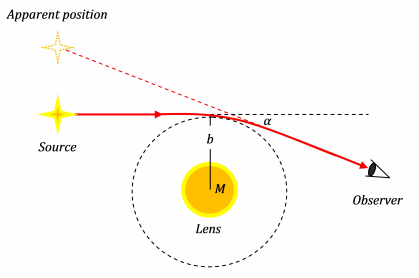
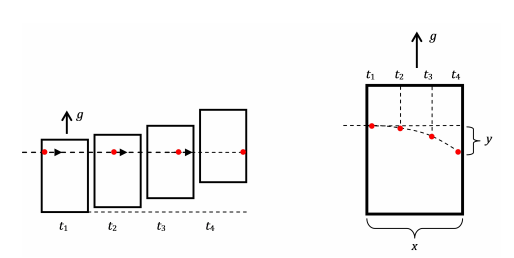

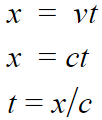

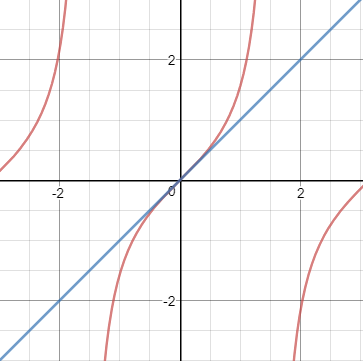
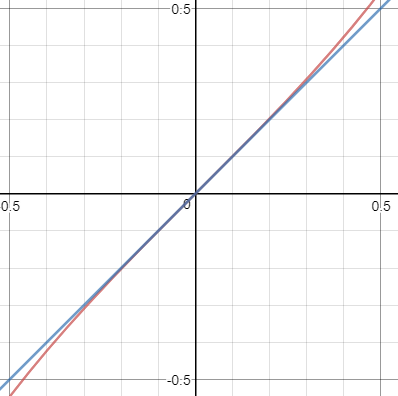
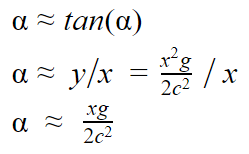
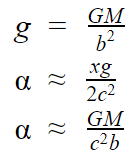
I think you failed to express the main point of the article, which is the use of the equivalence principle to compare the observer who is free-falling, thus seeing a straight beam, and the one in the rocket, who is accelerating to stand in the same position, and is thus on a non-geodesic path and sees the beam bending.
Thank You for your feedback! I hoped that it would have been more enjoyable to focus on this techniques role in supporting the concept.
Nevertheless, looking back I agree that I failed to do justice to the equivalence principle. After presenting the second half of the approximation methods, I will happily dedicate an article to the topic!
I guess if you made clearer what the two references frames are, it would be ok, even without mentioning the equivalence principle at that point. In any case, I enjoyed the approach, and it is funny that using only newtonian physics it is possible to arrive qualitatively at the same expression for the angle deviation for small masses.
Thanks for your good posts, I followed you! +UP